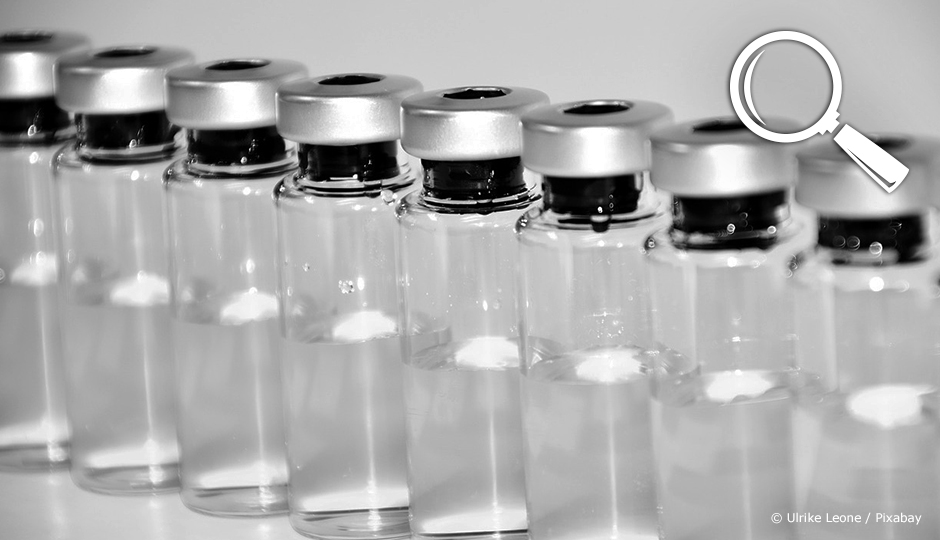Auteur : Agence Science Presse - Catherine Couturier
Efforts to develop a vaccine against COVID-19 are multiplying worldwide. Some anti-vaccination activists argue that this is a way for the pharmaceutical companies to make profits. It’s currently impossible to estimate what a hypothetical vaccine would cost and how much profit it would generate. But the Rumour Detector points out that the race to find any vaccine is very expensive.
It costs a lot
It doesn’t matter what opinion you may have about pharmaceutical companies. Manufacturing vaccines, with their high costs and uncertain results, isn’t their most profitable activity. That’s why several promising vaccines were abandoned or delayed considerably in the past few years, due to the lack of a profitable market. The Ebola vaccine is one example.
Because of the development costs, there are fewer vaccine manufacturers in the world. In 2016, the Coalition for Epidemic Preparedness Innovations (CEPI) was set up to stimulate, finance and coordinate the development of vaccines against epidemics. The goal was to avoid situations where the absence of lucrative markets would hinder vaccine development.
It’s true that some vaccines have generated record revenue in the past few years. One example is Shingrix, the shingles vaccine produced by Glaxo. Another is Prevnar, the pneumonia vaccine manufactured by Pfizer. Also, it’s more profitable to vaccinate the population against the flu every year than to create a new generation of vaccines that would be effective longer. But in general, vaccines aren’t a very profitable business.
There are many steps involved
A study published in The Lancet in 2018 estimated the development cost of a vaccine. It can take over a decade from discovery to approval. The venture can cost billions of dollars, with a 94% risk of failure. Manufacturing a vaccine is much more complicated than making a drug. Automated factories can produce drugs, which often require only a single molecule. The costs of a vaccine include research and development, as well as clinical trials, patenting and production.
The costs of clinical trials are higher for vaccines. They’re administered to healthy people, as a means of prevention, rather of to patients who are already sick. So the test protocols are much more cautious. The goal is to avoid side effects that are worse than the disease. Several studies of thousands of participants must be conducted before a vaccine is approved.
New infrastructures could also be necessary for this production. The infrastructures alone may cost between $50 million and $700 million. In general, each product (or family of the same product) requires its own production team and factory. In the case of COVID, all depending on the type of vaccine that will work the best, and because of the emergency, some existing factories could produce them.
It can take so long to develop a vaccine that the epidemic has time to run out of steam before a candidate is ready. That’s what happened in the SARS epidemic in 2003.
A drop in the bucket
The overall market for vaccines was about US$54 billion in 2019. That’s according to IQVIA, a company that offers support services to companies and individuals on healthcare. It looks like a lot, but it’s a drop in the bucket compared to all the revenue generated by the global pharmaceutical industry. This was about US$1200 billion in 2018 (projected at $1500 billion 2023).
Pharmaceutical industry revenue, 2018
Vaccines 4.3%
Other 95.7%
Other categories of drugs pay much better for the industry. A vaccine (like an antibiotic) has the disadvantage of being used for a short period or only a few times in a person’s life. In comparison, drugs against heart diseases or chronic illnesses must be taken every day for years. Lipitor, a statin used to reduce cholesterol, has generated several billion dollars a year for Pfizer for the past 20 years. In 2018 alone, Humiro earned $19 billion for the American company AbbVie. Humiro is an arthritis drug that is also used to treat a variety of diseases. The world’s 15 top-selling drugs alone generated over US$115 billion in 2018.
The development of niche treatments for rare diseases also occupies a choice position on the drug markets. According to the Express Scripts Canada report on prescription trends, consumption of certain very expenses drugs is rising. The report mentions $104,000 a year for eye drops and $1 million a year for gene therapy.






